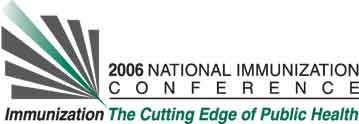Cherie Thomas1, Karyn L. Berry
2, Rosie McLaren
3, Jackie Wiggins
3, Paul Hess
3, and Jacob Mbafor
2. (1) (for the Washington, DC Immunization Program), Trey Industries, Inc, PO Box 2508, Locust Grove, VA, USA, (2) District of Columbia Department of Health, 825 North Capitol St., N.E, Washington DC, DC, USA, (3) NIP, CDC, 1131 Spring Road, NW, Washington DC
Learning Objectives for this Presentation:
By the end of the presentation, participants will be able to:
Identify steps needed to set-up a successful partnership between providers and a Registry
Identify successful strategies to identify and contact under-immunized children
Identify barriers that limit immunization level increases
Background:
Southeast Washington is a medically underserved area of higher than average poverty and is the District's Sentinel Site area. Approximately 25% of its households live at or below the poverty line. Southeast's population is 90% black, 8% white, and 2% other/mixed; 2% Hispanic ethnicity. Approximately 11,596 0-6-year-olds live in Southeast Washington; 11,126 (96%) have a record in the DC Immunization Registry; 10,519 have two or more immunizations recorded in the system. As of October 30, 2005, Southeast Washington 19-35-month-old children had immunization levels of 61.45% for 4:3:1:3:3:1 based on records in the Registry; 4 PCV7 32.10%; 4 DTP 71.35%; 3 HepB 77.22%.
Setting:
110 providers, located throughout DC, which serve children living in Southeast Washington.
Population:
Children 0-6 years of age living in Southeast Washington with immunization records in the DC Immunization Registry.
Project Description:
Through VFC CASA/AFIX, contact was made with providers to identify low immunization levels and stress the importance of recalling children particularly for delayed pneumococcal vaccinations.
Each month reminder/recall client lists and reminder postcards were distributed to all providers for children 0-6-years last vaccinated in their practices. Immunization levels were monitored monthly for the children using the Immunization Registry and as part of the quarterly CDC Sentinel Site report.
Results/Lessons Learned:
Provider-based reminder and recall efforts can increase immunization rates in a highly mobile, high-poverty population. Immunization Information Systems can facilitate reminder and recall efforts for Providers by consolidating immunization records from multiple providers, identifying immunization required by automated forecasting, and automatically generating reminder/recall lists for providers.
See more of Posters
See more of The 40th National Immunization Conference (NIC)

